The Veloci Mesa may not be for every runner, but if it’s for you, it could save your running career. Crafted with injury-prone runners in mind, this shoe offers a soft step with a wider toe box and subtle stability.
 These beautiful, stable shoes are designed to reduce foot and lower leg pain and injuries while running. Can a shoe reduce the time runners spend sidelined by lower leg and foot pain?
These beautiful, stable shoes are designed to reduce foot and lower leg pain and injuries while running. Can a shoe reduce the time runners spend sidelined by lower leg and foot pain?
Veloci was founded by a Division 1 runner, Tyler Strotham, who faced the miserable choice between running with discomfort in his feet or pain in his lower legs. Refusing to accept this trade-off, Strothman designed a shoe that feels good on the feet and legs.
It’s hard for a new small brand to break in, but we’ve seen others do it well and of course we have to checkout anyone that claims to help with injuries!
Who Is It Good For?
- Wide Feet: The Mesa’s roomy toe box encourages natural foot movement and spread. Most wide feet should find these comfortable, but if your feet are consistently wide or wide at the heel, you may need to size up.
- Heavier Runners: Heavier runners may benefit from the impact-dampening foam and extra stability offered by the Veloci Mesa.
- Long Runs: The cushy foam, natural foot shape, and high heel drop are fantastic for high-mileage days.
- Front of the Pack: These are not super shoes, but they are lightweight and comfortable. Fast runners who struggle with pronation or heel pain may find these shoes allow them continue to compete.
This shoe is great for runners who overpronate and experience niggles or frequent injuries in their lower legs or heels.
Veloci Mesa Overview
As my first stability shoe, I was pleasantly surprised to find that Veloci’s Mesa provides gentle guidance, not rigid control.
On longer runs, I appreciated Veloci’s wider toe box. Veloci stands out from other higher drop shoes by offering a wider toe box. Although wider toe boxes are common on low or zero heel drops, such as Topos or Altra, options are more limited for runners who prefer a traditional running shoe with a little more wiggle room at toes.
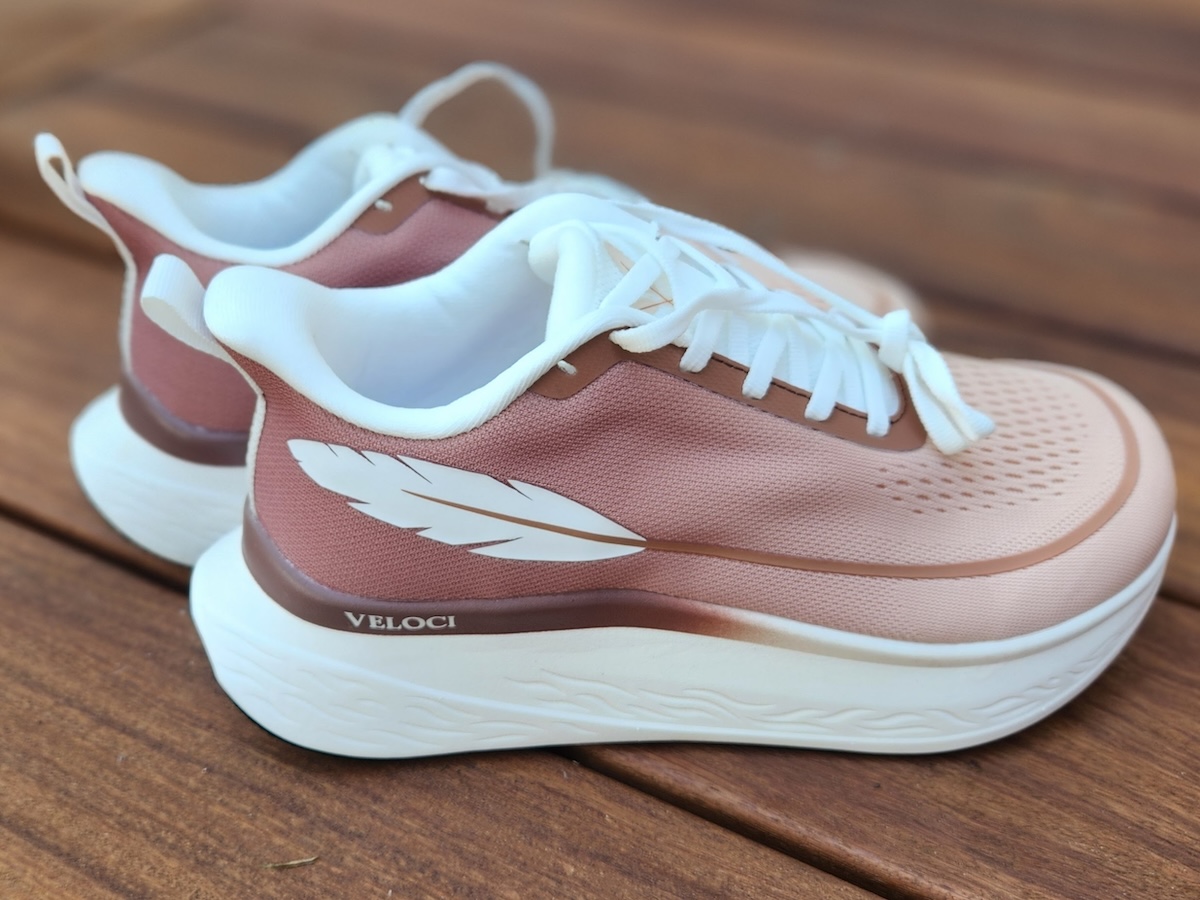 When I first put on the Mesa, I noticed the firm heel counter. The shoe cradled and cushioned my heel. Once I started running, Veloci’s Wingwall Stability wall did not interfere with my footing.
When I first put on the Mesa, I noticed the firm heel counter. The shoe cradled and cushioned my heel. Once I started running, Veloci’s Wingwall Stability wall did not interfere with my footing.
Since these were designed for overpronators, I attempted a few forced overpronations during slow runs. The stiff wall provided enough structure to gently correct my stride.
I tested the Mesa on a variety of road surfaces, including a gravel rail trail, dirt roads, and various asphalt surfaces. The Mesa’s thick cushion deadened the pounding from hard surfaces and provided a softer ride.
Gravel surfaces left marks on the foam, but the shoes performed well otherwise on the softer surface.
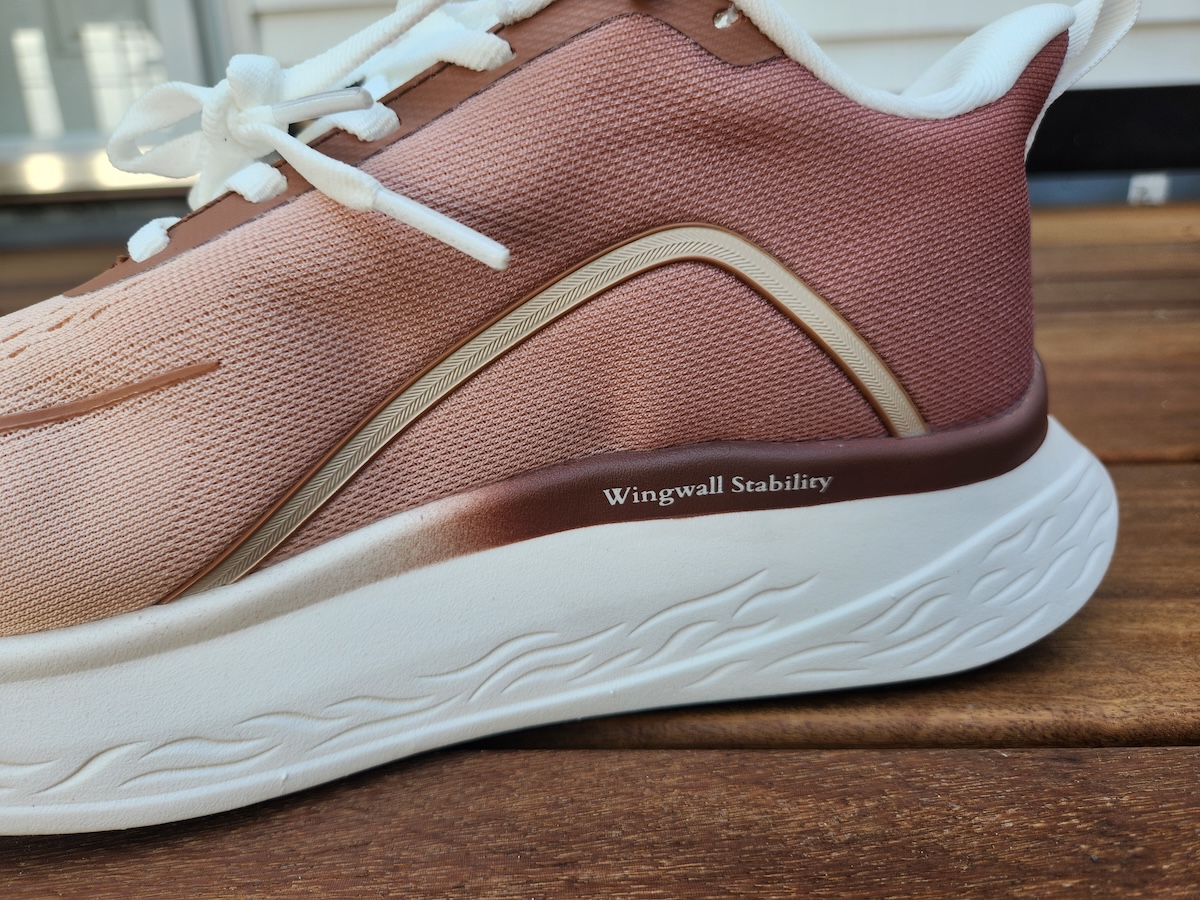
If you do not need a stability shoe but are intrigued by Veloci’s designs, consider the Ascent. As Veloci’s premier shoe, the Ascent offers a similar high stack, wide toebox, and squishy cushion.
Veloci Mesa Specifications
- Weight: 9.5 oz women’s
- Stack Height: 39mm
- Heel Drop: 10mm
- Available in 2 colors
- Not available in wide
- Available on velocirunning.com for $180
Quick Take
- Roomy toebox
- Stability Wing Wall is supportive and secure
- Lightweight
- Gravel left marks in the foam
- Sizes run small
- Not built for speed
These shoes are stunning. The rosebud colorway feels fast but elegant. The feather motif reminds me of the Greek god Mercury’s winged feet.
Veloci Mesa Fit
The Mesa runs small. Runners between sizes should consider sizing up. (I’m glad I did.) While I had to tie my laces firmly to fit through the mid-foot, the shoe length fit appropriately.
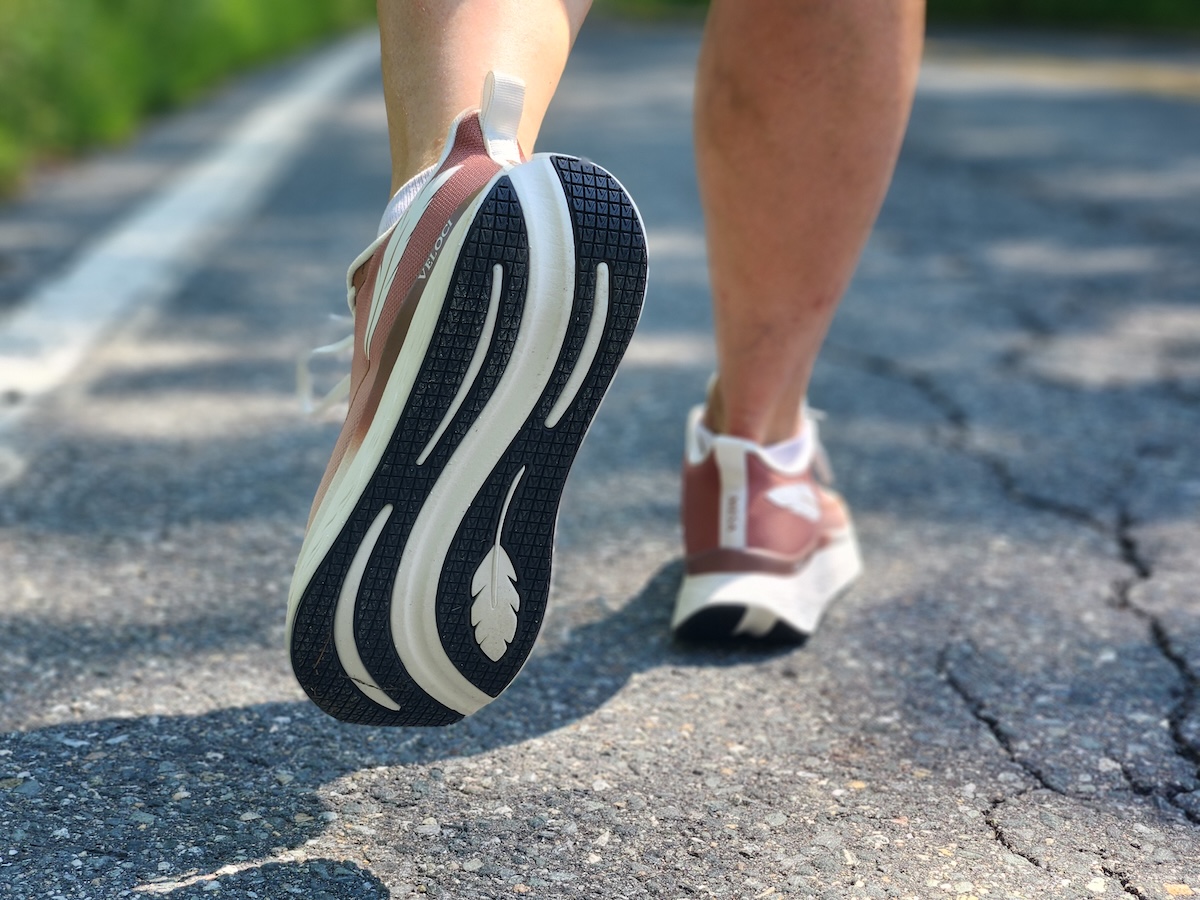 Veloci Mesa has a wide toe box, which is delightful during long runs when the toes swell. Because these shoes have a higher drop, I noticed that my toes seemed to spread more than they would in my 5 mm drop road shoes. I already have a wider forefoot and was grateful for the extra space in front.
Veloci Mesa has a wide toe box, which is delightful during long runs when the toes swell. Because these shoes have a higher drop, I noticed that my toes seemed to spread more than they would in my 5 mm drop road shoes. I already have a wider forefoot and was grateful for the extra space in front.
As I ran, the heel did not budge. The stability wall provided extra security to the heel, and both the heel counter and stability wall are well-padded. I finished my long runs without chaffing or blisters.
Mesa’s upper is flexible and breathable. The fabric moved easily with me and kept my feet as cool as possible in the late summer heat. Although comfortable, thin, and breathable, the fabric showed no sign of wear and feels durable.
These shoes come with flat laces, which tend to stay tied longer than round laces.
 The tongue is richly padded and is attached to the upper. With a secure tongue and flat laces, I could pursue those PRs on Strava without needing to adjust my shoes’ fit on the fly.
The tongue is richly padded and is attached to the upper. With a secure tongue and flat laces, I could pursue those PRs on Strava without needing to adjust my shoes’ fit on the fly.
Under my feet, the midsole has a comfortable liner and low to moderate arch support.
Mesa’s outsole has a high stack. Its thick foam absorbed impact from harder running surfaces. Despite the thick cushioning, I eventually felt some pounding on the balls of my feet. This discomfort was likely due to a higher drop than I typically use. Those who need a higher drop will probably find this an acceptable trade-off.
The thick sole is light underfoot. Mesa’s bouncy sole feels fast despite being a stability shoe.
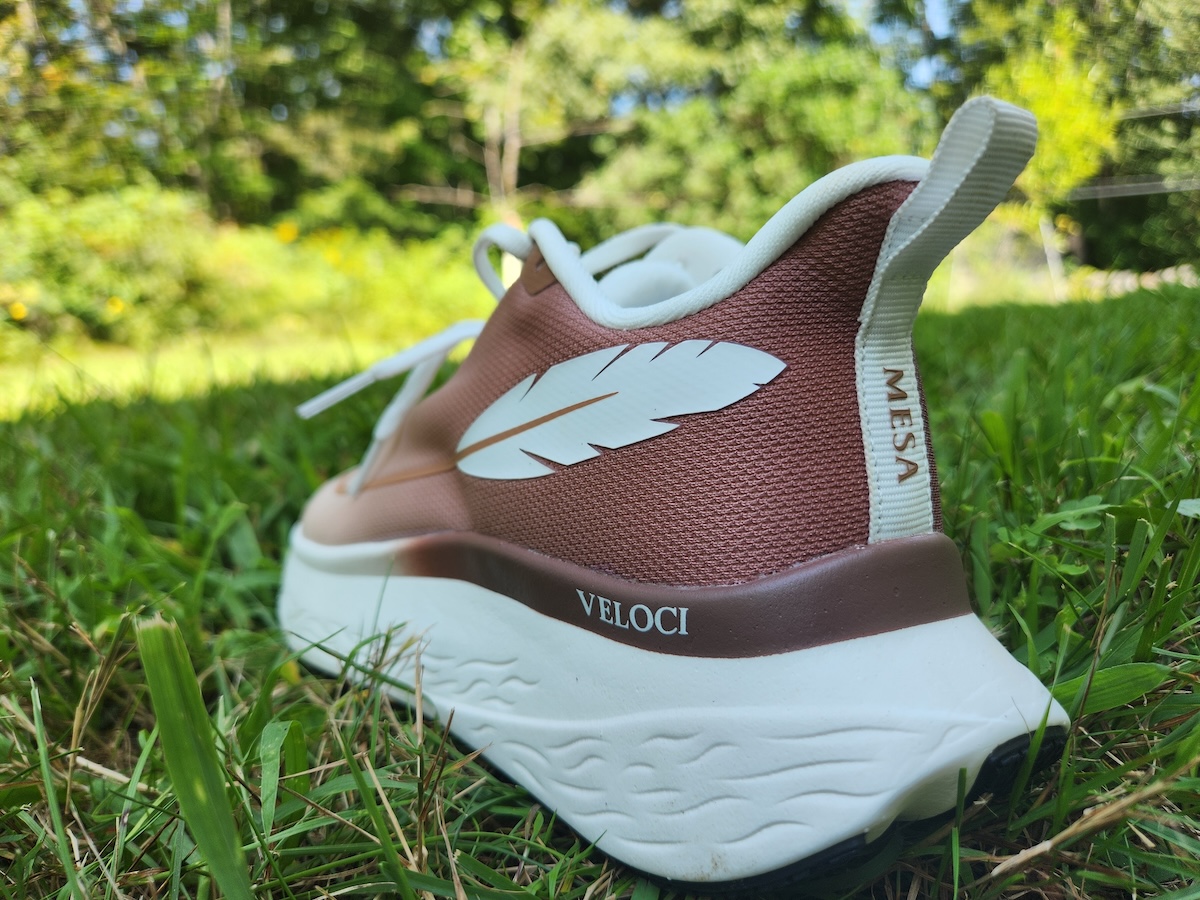 Contributing to its fast-feel, Mesa’s moderate rocker shape provided a smooth run. Thankfully, the rocker was not so pronounced that I could not also walk in these shoes.
Contributing to its fast-feel, Mesa’s moderate rocker shape provided a smooth run. Thankfully, the rocker was not so pronounced that I could not also walk in these shoes.
I also appreciated that the Mesa included a pull tab long enough to be functional. Pull tabs are a small detail, but I like them. They ease entry into the shoes and make the experience a tiny bit simpler.
Veloci Mesa Feel
The Mesa is designed to feel good – especially if you struggle with Achilles pain or lower leg discomfort.
A higher drop reduces pressure on the lower legs. These shoes may help runners struggling with plantar fasciitis, calf injuries, and stiff Achilles.
 Initially, the Mesa felt very light and cushy. These shoes were not particularly nimble, but I could see myself pushing long miles with limited fatigue.
Initially, the Mesa felt very light and cushy. These shoes were not particularly nimble, but I could see myself pushing long miles with limited fatigue.
As the miles accumulated, I noticed a difference between my heel and my forefoot. While my heels felt fully cushioned, the front of my soles felt the impact. The additional heel cushion may be perfect for runners who heel strike or experience plantar fasciitis.
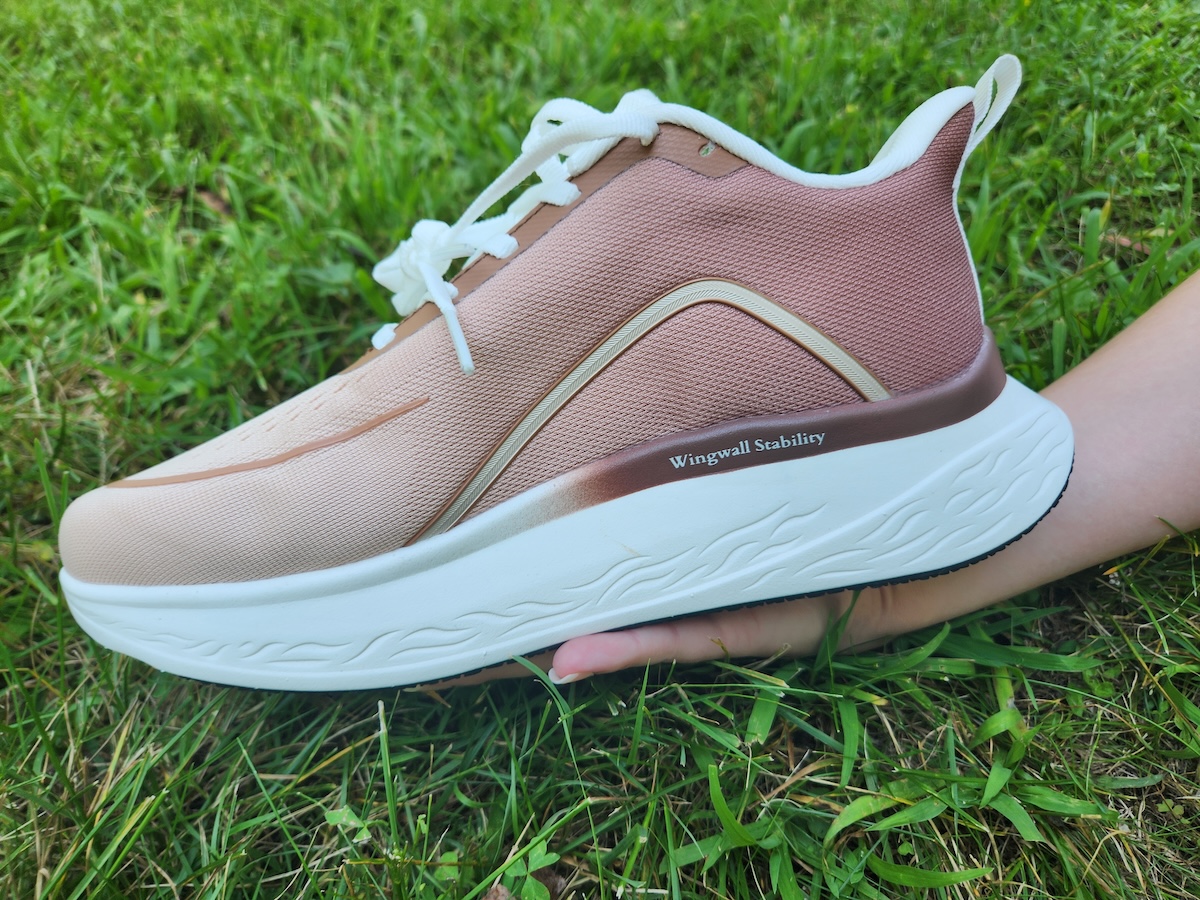 Despite the higher stack and drop, the shoe was very stable.
Despite the higher stack and drop, the shoe was very stable.
My ankles felt hugged and secure. Veloci achieves an adaptable support through its trademark Wingwall. This cushioned, flexible heel counter guides the foot as it moves. The wider shoe base also provides stability and guidance.
Mesa’s support wall appears to be similar to the cushioned heel counter offered by Brooks’ Adrenaline GTS 24. The Adrenaline has an even higher drop of 12 mm and a nitrogen-infused cushioning that visible squishes when compressed. The Adrenaline has a traditional toe box but is offered in multiple widths.
Similar Shoes to the Veloci Mesa
We’ve tested a few other stability running shoes that feel similar, but different based on the brand fit:
- Topo Aura – Another wide toebox, stability shoe with softer cushion
- Brook’s Adrenaline GTS 24 – Higher stack height and narrower toebox
- Altra Paradigm 8 – Wide toe box, nice cushion, zero drop stability shoe
Our Verdict
The Veloci Mesa could be a Goldilocks shoe for runners seeking a shoe that stabilizes, reduces ankle and leg discomfort, and provides a natural toe box. We feel like it’s missing some forefoot cushioning to make it super comfortable for longer miles.
Who Tried It?
Becky Trudeau lives in New Hampshire and enjoys trail running in the mountains near her home. She has completed multiple half marathons, a mountain marathon, and a 50k with 7,000 feet of elevation. When not running, you may find her mountain biking, backcountry touring, cross-country skiing, or reading a mystery.
What to read next?
- Best Stability Shoes for Runners
- Our favorite wide toe box running shoes
- Checkout our complete list of stability running shoe reviews
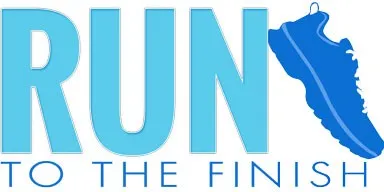


 Hoka Challenger 8 Review | Road Comfort with Trail-Ready Improvements
Hoka Challenger 8 Review | Road Comfort with Trail-Ready Improvements